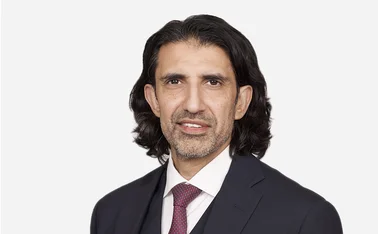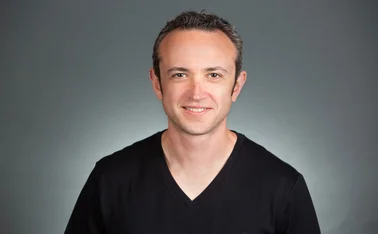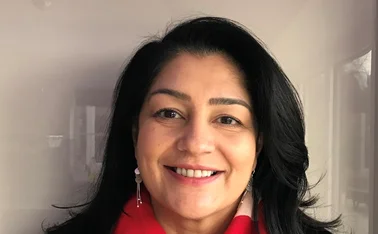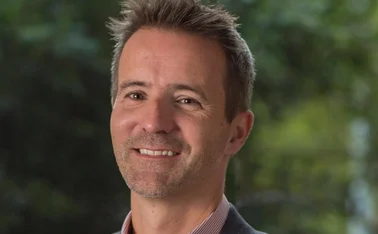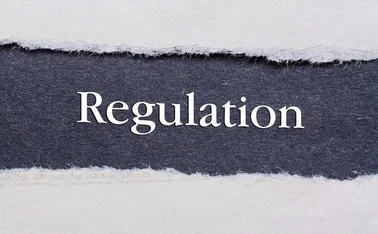
Roundtable: Telematics: The future of motor?

To date telematics has been used for niches such as young drivers but, with providers making further advancements all the time, will this be the case in the future?
The use of telematics has steadily grown in the UK over the past five years. While the technology is still largely used to monitor driving in niche sectors – such as young drivers – insurers and government are realising its potential to be implemented on a larger scale. Data extracted from telematics products will be vital for insurers to accurately price risks, as well as playing a role in combating motor fraud. Post, in association with Octo Telematics, brought together representatives from the insurance, telematics and aggregator communities to discuss how telematics and the data it collects can transform insurers’ offerings.
The group was first asked to consider how well big insurance players are using telematics to leverage profitability in the currently tough motor market. The general consensus from the attendants was that it was telematics providers, rather than insurers, making strides in this area.
RSA UK telematics director Bob Skerrett said insurers have taken a cautious approach in relation to the motor market in recent times.
“Anybody can write lots of top line one year and then regret it 18 months down the line, so that is the kind of mind-set that has been important for insurers. The pace of change hasn’t been driven by insurers, it has been driven by people such as Octo, as well as new entrants such as Ingenie, and Insure The Box,” Skerrett said.
“The big insurers are cautiously looking and testing some stuff out. You are seeing more tests, but the strides are not coming from insurers,” he added.
Co-operative Insurance motor product manager Nick Ansley agreed with Skerrett, adding the cost of telematics being expanded beyond its current niches is a barrier for some companies.
 Co-op has been operating in telematics for the past five years, first as a panel underwriter for Cover Box and now on its own with Young Driver, he explained. “At the moment it is all young driver and high risk. You are not going to want to expand out into high risk willy-nilly. You are going to want to take it reasonably cautiously,” Ansley said.
Co-op has been operating in telematics for the past five years, first as a panel underwriter for Cover Box and now on its own with Young Driver, he explained. “At the moment it is all young driver and high risk. You are not going to want to expand out into high risk willy-nilly. You are going to want to take it reasonably cautiously,” Ansley said.
“We know the cost of the boxes, of managing the data and of storing the data. Breaking out of those niches is going to be an issue for us because of the costs involved. New technologies are coming along that are going to bring the costs down, but along with new technologies is the [question of the] quality of data so [we also have to consider] how we are going to use that to best effect,” he said.
For Nigel Walsh, Capgemini UK insurance head, the insurance industry needs to get on board with telematics as soon as possible or risk being left behind. “Telematics has got the perfect opportunity to disrupt, not just in motor, but elsewhere as well, and it is coming. It is a question of when the insurance industry will wake up and [realise] we need to jump on this now or we are going to miss the opportunity,” Walsh said.
Insurer’s reluctance
Stephen Humphrey, Insure The Box business performance head, highlighted the struggling motor market as a factor in insurers’ reluctance to fully embrace telematics.
“Telematics adds cost, so [consumers] have to see a benefit before they consider it. It is about the end-to-end solution and being able come up with a customer proposition that is coherent and is commercially viable, which is very complex to do,” Humphrey said.
Humphrey reiterated it was crucial for customers to see the value in having a telematics policy over a standard motor policy.
“What you have to balance is an offering that is appealing to the customer. That is where [Aviva] went wrong all those years ago – because it was trying to cut its risk. Consumers didn’t want [the product]. It wasn’t a viable proposition for them. You have to give something that is valuable to the customer,” he said.
“In order to take advantage and be profitable you have to be incredibly agile, change business priorities quickly and react to the market. That is probably where [things have become difficult for] some of these big insurance companies.”
One way of harnessing customer loyalty identified by the group was offering soft benefits alongside a telematics product, such as roadside assistance.
Hastings commercial manager for telematics Louise Williams said the shift towards the customer also includes how best to use the data telematics devices collect. “That is, ultimately, going to be key in driving telematics forward. We know the cost savings, but what does that give the customer – the fact we can intervene on claims straight away and get the emergency services to them?” Williams questioned.
Skerrett added there are other areas where having telematics could benefit the customer. “I’m quite excited by the idea you could reduce the cost of motoring. Insurance is a fraction of your cost of motoring. Quite a lot of people probably spend more on coffee from petrol stations than they do on insurance, so if you save them money on coffee or fuel or other things that can make the cost of motoring expensive, then the economies can change,” he said.
 Protect Your Bubble product manager James Brown identified two main reasons customers would be attracted to a telematics policy – it will save them money and give them peace of mind.
Protect Your Bubble product manager James Brown identified two main reasons customers would be attracted to a telematics policy – it will save them money and give them peace of mind.
“It is the parents of young drivers that will be happier their offspring are driving without going 100 miles an hour over a roundabout and they have the ability to prove they are good drivers. We have got some customer insight that proves that is quite a powerful thing for young drivers,” Brown said.
However, Ansley was concerned about insurers going beyond their skillset and offering other benefits. “I was always worried about [soft benefits] because if we go outside what we are good at and start diversifying we will lose the point of what we are trying to do – which is manage risk,” he said.
Humphrey added: “You have to get the basics right. You have got a loss ratio to manage. There are lots of opportunities [but] there is a danger of people becoming side-tracked with pursuing those sidelined opportunities which are sometimes worth doing but it can take your eye off the ball in terms of [the more basic things].”
“There are some fantastic opportunities with this and I don’t think insurers should ignore them but I also don’t think insurers should go after those goals specifically on their own because they still have to manage [the rest of the business].”
Indeed, Octo Telematics UK managing director Martin Williams questioned the most effective way for telematics products to be priced.
“Given the data we collect, how far off are we from pricing at the outset on the basis of customers saying they will have a black box fitted to their car to actually moving to a stage where we can pretty much identify [and price] good drivers before they take out the policy and start driving?” he said.
Johan Strydom, director at The Actuarial Consultants, said often brokers will want a discounted rate and enhanced commission for telematics products.
“Every time we look at one of these products we need to go through this whole process. Is this an attractive proposition for a customer? Does the sum add up? Does it feed into our claims system? You have to put all these little puzzle pieces together and see if that discount is then worth the discount itself plus the enhanced commission for the technology cost,” Strydom said.
Andrew Bennett, Drive Style chief executive, said pricing policies on terms other than standard rating questions is dependent on the weight given to telematics information.
“Insurers will apply an overall telematics score across the five major perils rather than having a different weighting based on telematics data. Unless that level of granularity comes in, it is a bit of guesswork in respect of what this risk score means to the rate.”
Government engagement
The government’s green paper on young driver safety was raised in the discussion, a debate in which telematics played a central role.
The publication of the green paper, first proposed in March 2013, has now been indefinitely postponed. It was intended to consider a range of options for young learner drivers, including: a minimum learning period; lessons on motorways and in adverse weather conditions; increasing the existing probationary period from two to three years; and incentives for young drivers to take up additional training after passing their test.
 Bennett said the government had concerns around the social mobilisation aspect of night-time curfews.
Bennett said the government had concerns around the social mobilisation aspect of night-time curfews.
“[There are people] who live in rural areas who need to get to urban centres to work. [Either] there is no public transport or public transport is not affordable, or cost effective for local authorities to put on, so the ultimate source is to get these people mobile in a vehicle. Because insurance is so expensive for young drivers they are becoming socially excluded,” Bennett said.
“[The government] is very interested in telematics and how that can resolve some of those problems but there may be some kind of block insurance for young drivers that may eventually come into being,” he said.
By block insurance, Bennett was referring to cover for young drivers that would – as part of their road fund licence – give third‑party fire and theft cover with the option to be telematically monitored.
“They can take a homogenised score somewhere else, to anybody, whether it is telematics or not, to then get follow-on insurance, or upgrade to comprehensive cover on the vehicle.” In parts of South Africa and Australia this type of solution happens en masse, he explained.
Attendants were then asked to consider another contentious area – driverless cars. For SBD safe car division head Alain Dunoyer, autonomous vehicles have attracted a lot of hype. “Every day you can read articles saying ‘X’ manufacturer will deploy an autonomous vehicle by 2020. But there are a huge amount of barriers, just technologically, to get to that point. It is very much a progression rather than a revolution,” he said.
“The question for me is, what do people want? If you say to people, ‘Do you want an active autonomous vehicle?’ they will probably say yes, but are they ready to pay for it? Probably not so much,” he said.
Walsh added that, while autonomous vehicles may not be the answer, it is about making the public aware of where the technology is headed. “The fact Google came out with this pod has made the general public aware. There are very few people who don’t know what Google is, so it has made the general public aware of capability,” he said.
Boston Consulting Group principal Ofir Eyal predicted driverless car technology may be here faster than people think. “The regulation will probably take up most of the delay but, as an industry, if we [keep saying] ‘This will never happen and the technology is too old’, then we will be unpleasantly surprised,” Eyal said.
As the conversation wrapped up, Money Supermarket senior partnership manager Heather Branigan asked how aggregators could help with educating consumers about telematics products. “That is our conundrum at the moment – we don’t want to go down the line of having a different results page specifically for telematics, but we do want to help frame it for customers,” Branigan said.
Louise Williams added: “That is a huge barrier for us at the moment. Aggregators do not give telematics the justice it deserves. [They don’t] sell any of the benefits and there have been lots of horror stories in the press around curfews, so the stigma is still there.”
Branigan said Money Supermarket is to change the way it frames its results in August so that the value and cost balance will be given to customers.
Skerrett concluded it was crucial for insurers to put themselves in the customers’ shoes. “We all drive. It is the people who do best at responding to the change of the connected car and giving customers what they want from a connected car that will win.”
This article was published in the 26 June edition of Post magazine.
Only users who have a paid subscription or are part of a corporate subscription are able to print or copy content.
To access these options, along with all other subscription benefits, please contact info@postonline.co.uk or view our subscription options here: http://subscriptions.postonline.co.uk/subscribe
You are currently unable to print this content. Please contact info@postonline.co.uk to find out more.
You are currently unable to copy this content. Please contact info@postonline.co.uk to find out more.
Copyright Infopro Digital Limited. All rights reserved.
As outlined in our terms and conditions, https://www.infopro-digital.com/terms-and-conditions/subscriptions/ (point 2.4), printing is limited to a single copy.
If you would like to purchase additional rights please email info@postonline.co.uk
Copyright Infopro Digital Limited. All rights reserved.
You may share this content using our article tools. As outlined in our terms and conditions, https://www.infopro-digital.com/terms-and-conditions/subscriptions/ (clause 2.4), an Authorised User may only make one copy of the materials for their own personal use. You must also comply with the restrictions in clause 2.5.
If you would like to purchase additional rights please email info@postonline.co.uk

